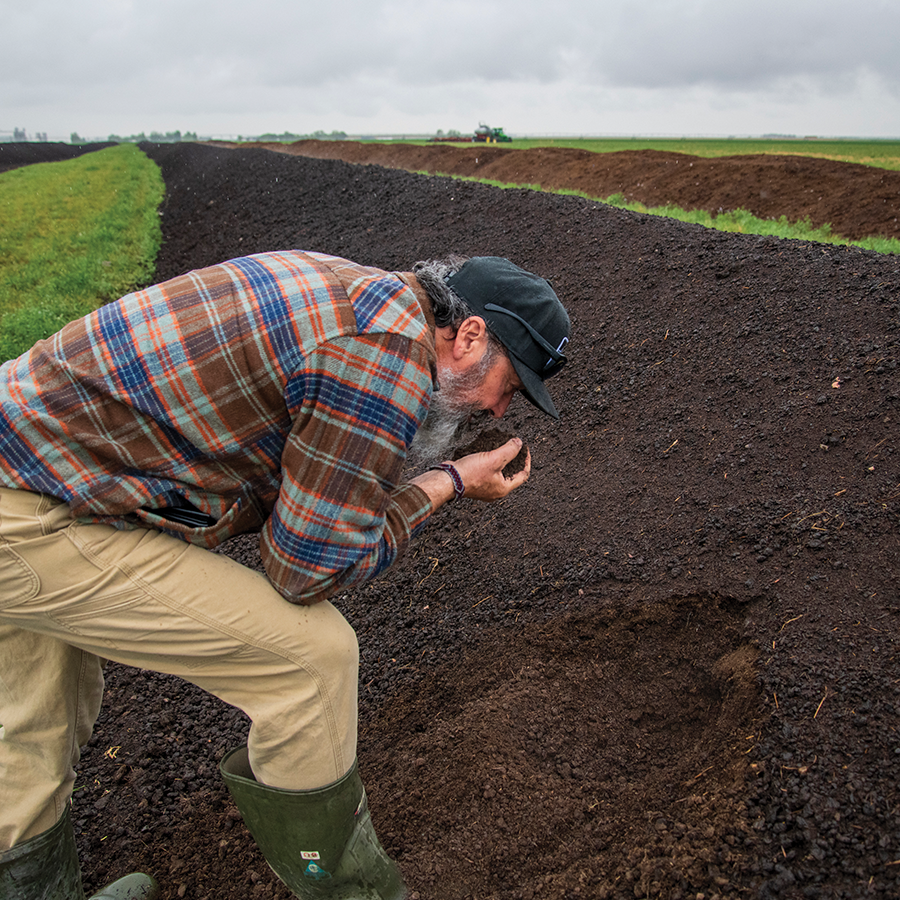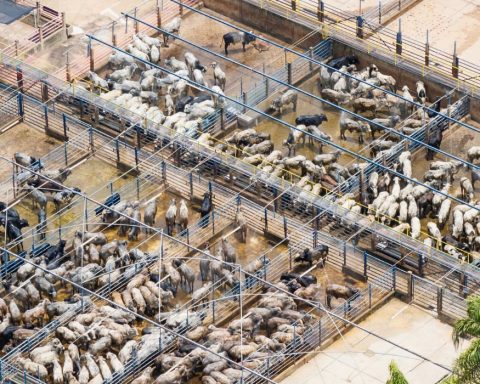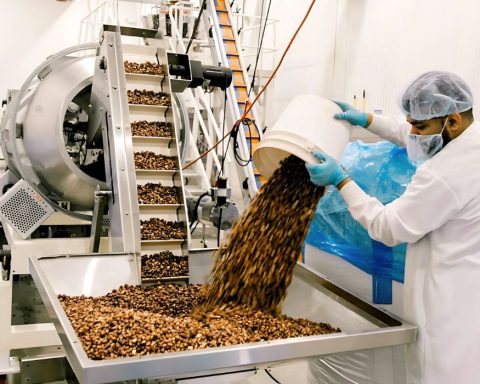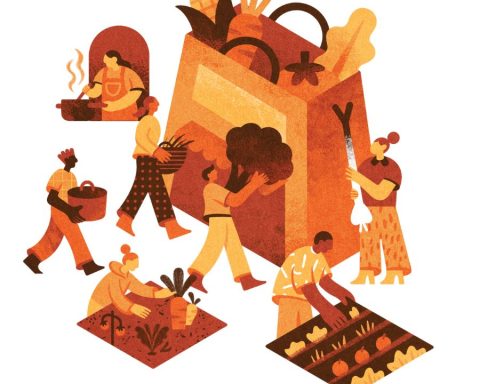Consider the potato, the most beloved of tubers.
In our passion for spuds, humans have consecrated an area of the earth roughly equivalent to the size of Great Britain. From those vast tracts we produce 375 million tons of potatoes globally, which is something like the weight of every car in the United States put together. The world’s potatoes are collectively worth US$116 billion, and the market is booming.
What makes a potato good? Sure, it’s flexible in the kitchen and can be mashed for ease, scalloped for excellence or grated for latkes. But best of all it can be cut into strips and fried in oil until it is both crispy and soft – an unparalleled comfort food, adored by vegans and omnivores alike.
Everyone eats french fries. (Well, 98% of North Americans, at any rate.) As you read this, you’ve probably got a bag of frozen fries in your freezer, just waiting for you to dump them on a pan and bake them in the oven at 425°F for 20 to 25 minutes the next time you’re too tired to cook.
In the kingdom of frozen french fries, only one producer could rightfully claim the throne: McCain Foods, a Canadian company founded in the small town of Florenceville, New Brunswick, and now in its 68th year. Today, it is active in 160 countries across four continents, and its annual sales of frozen potato products exceed $16 billion. A major supplier for McDonald’s, McCain claims to produce one out of every four french fries eaten in the world.
But McCain has a problem. It’s the same problem that confronts us all, to a greater or lesser extent: climate change is imperilling how we get our food.

A crisis for agriculture
“When we first started on our journey as a company, we probably would have experienced a climate event once every 10 to 15 years,” Charlie Angelakos said on a video call in April. “What we’ve found, particularly in the last 10 years, is that climate issues started happening with our crops on a more frequent basis.”
Angelakos is McCain’s vice president of global external affairs and sustainability, and he’s telling me about a study the company issued in 2018 to assess its vulnerability to the impacts of a rapidly changing climate. The results were startling. “It showed that if we were to stay on the same trajectory, we would have more and more climate disasters with our crops in the different growing regions around the world.”
Today, Angelakos says the company contends with three to five climate events every year across the 3,900 farms globally that supply its potatoes. By “events” he means crop killers: entire harvests destroyed by fire, flood or drought, as well as wild swings in yield from year to year. The company’s executives realized they needed to act quickly to secure their supply chain. The solution, they realized, was hiding in plain sight: a traditional form of farming that preceded industrial monoculture agriculture, protects against droughts and floods, and even offers better returns for farmers – aka, regenerative agriculture.
It’s an assured supply strategy. How do you build a sustainable, resilient food supply chain for the future?
—Charlie Angelakos, VP of sustainability, McCain Foods
So the company embarked on a new mission to attain 100% regenerative agriculture across its farms by 2030. Currently, 71% of its farmers are at the onboarding level.
Other large corporations like Pepsi and Nestlé have announced commitments to regenerative agriculture in recent years, but those pledges have largely been framed in terms of meeting emission-reduction targets. For McCain, the logic is more immediately existential: the goal is to better cope with environmental and financial shocks. “It’s an assured supply strategy,” Angelakos says. “How do we build a sustainable, resilient food supply chain for the future?”
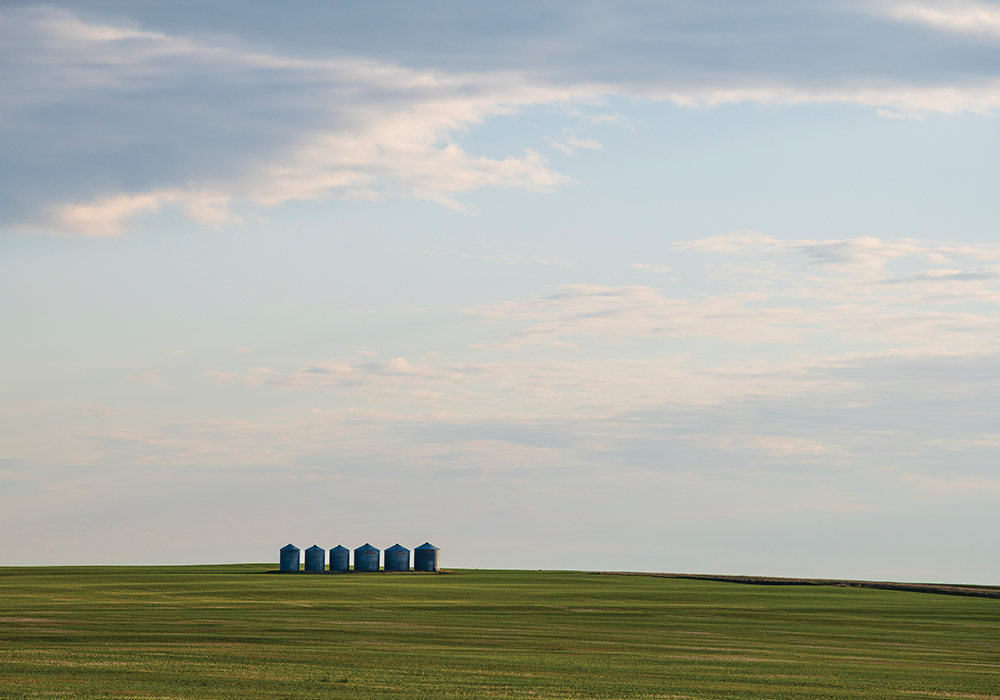
Replenishing the soil
“Regenerative agriculture” is a $10 phrase that sounds too wholesome to be interesting – until you consider the stakes. Namely, the viability of a food system that keeps us fed at the expense of nature and our health.
Basically, it’s the opposite of monoculture farming, which has sustained the earth’s exploding population for decades but relies heavily on herbicides, pesticides, fungicides and synthetic fertilizers. Regenerative agriculture strives to cut back and eliminate all those harmful chemical inputs, so the farms can function as healthy, self-sustaining ecosystems. In other words, it’s a method for turning dirt into soil, by bringing back the micro-organisms and other stuff that make plants happy.
Really, regenerative farming is just the old ways of doing things, says Harold Perry, a potato farmer in Alberta and a supplier for McCain and Frito-Lay. Perry’s family has been farming 6,000 acres near the town of Lethbridge since 1909, beginning with his great-grandfather John. Perry’s daughter is studying agronomy and will take over next, the fifth generation to raise crops on that land.
Perry, who is 54, has been fascinated by the science of soil health for nearly three decades. He received a scholarship from Nuffield Canada in 2006 to travel internationally and meet other farmers using regenerative practices, and he’s well-versed in the research and language of plant biology. But for all the complexity of modern agronomy, the techniques for achieving healthy soil are fairly straightforward. “Our major thing is to keep the ground green at all times,” Perry says over the phone, referring to the practice of planting so-called cover crops such as buckwheat, clover and hairy vetch during times when regular cash crops are not being grown. Cover crops not only deposit more nutrients and organic material into the ground; they also protect the soil from damage from extreme heat.


This basic principle of regenerative farming – often referred to as “armouring” the soil – is also one of the six key principles in McCain’s Regenerative Agriculture Framework, produced in partnership with the U.S. Soil Health Institute, which the company is using to guide its network of farmers through the program and measure their progress.
While most other food producers that carry the financial heft of McCain would use brokers, the company contracts directly with farmers, which allows it to more effectively implement new standards and practices.
Another key tenet of regenerative farming is tilling the ground less or not at all, which the company calls “minimized soil disturbance.” There’s a mechanical straightforwardness to the logic to this practice: by avoiding tillage and allowing the roots from cover crops to break up the soil, it becomes less dense and compacted, so more water, nutrients and micro-organisms can soak down into it.
In conventional agriculture, the soil can’t hold water nearly as well, so it’s more vulnerable to flooding. “When it rains a lot, a significant amount of soil is washing away from your field, and the top layer is very important because this is where there’s more nutrients and more organic matter,” says Claudia Goyer, a molecular biologist for Agriculture and Agri-Food Canada. Flooding carries not only topsoil into the watershed, but fertilizer as well, where the fertilizer feeds algal blooms.
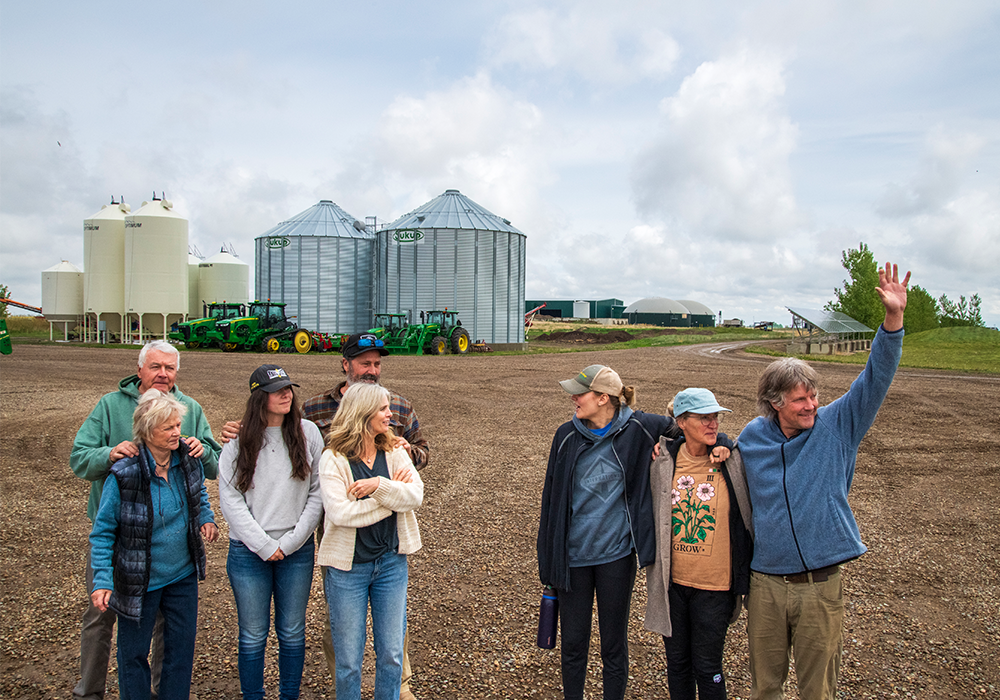
Surging adoption
Unlike many other solutions to society’s most pernicious problems, regenerative farming has one overwhelming advantage over conventional agriculture: it’s more profitable – as much as 75% to 80% more profitable, according to research by the Soil Health Institute. “Conventional systems are focused on yield, whereas regenerative systems are more focused on profit,” explains Salar Shemirani, CEO at the certification provider Regenified. “Yield can go down for a year or two during the transition, but you are using less inputs, less fuel, less labour.” Fewer costs means better returns.
This is especially important as conventional farming can be a low- or no-profit business, and farmers lately have been forced to contend with historically high costs of doing business. The prices for fertilizer, seed and other inputs have all soared, while commodity prices for their products have plunged. In the United States, President Donald Trump’s universal trade war has made the situation even worse.
Still, farmers can take a hit at the very outset of their transition. “We do know that in the early years there will be a slight dip in profitability for the farmer, and then over time, as yields increase, it does become a profitable endeavour,” Angelakos says.
McCain has partnerships with financial institutions in eight different countries to offer low-interest loans and other discounted financing options to help its farmers invest in things like cover crops and new equipment.
Transitioning to regenerative practices can be an uphill struggle for other reasons too. “A lot of growers felt that it was forced on them,” Perry says. When big companies insist on new practices, it can feel like they’re saying that farmers don’t know what they’re doing, and this can be an impediment to adoption.
It is essential that companies set up frameworks that lead to steep reductions in agrochemical use in their supply chain at an urgent pace.”
—Sarah Starman and Kendra Klein, Friends of the Earth
Still, because of its many upsides and few downsides, regenerative farming is rapidly gaining traction; stakeholders using the language of change curve models now say it has moved past the early adopter phase and entered the early majority phase. A market analysis by Grand View Research projects that regeneratively farmed products will see a compound annual growth rate of 15.7% from 2023 to 2030.
Gabe Brown, the well-known advocate for soil health and co-founder at Regenified, says that he’s seen more change, more commitments and more progress in the past two years than in the past 30 years combined.
Among regenerative agriculture’s most notable fans is Robert F. Kennedy Jr., currently serving as the U.S. secretary of health and human services. His Make America Healthy Again plan lists “advancing regenerative and precision agriculture” among its top goals. The former environmental lawyer advocates for a “nutrition-based approach to disease prevention” that starts with soil health. Kennedy points the blame at “highly chemical, intensive processed foods.”
But surging interest in regenerative farming has made it vulnerable to greenwashing. Bloomberg News warned in 2023 that Big Food’s regenerative agriculture push was running a greenwashing risk, due to the lack of established targets. A report by the investor network FAIRR found that among 79 agrifood companies worth US$3 trillion, most (50) had announced some kind of regenerative initiative with their suppliers, but few were measuring their progress and only four were actually supporting farmers financially to deploy regenerative practices. Lots of talk; not much meaningful action.
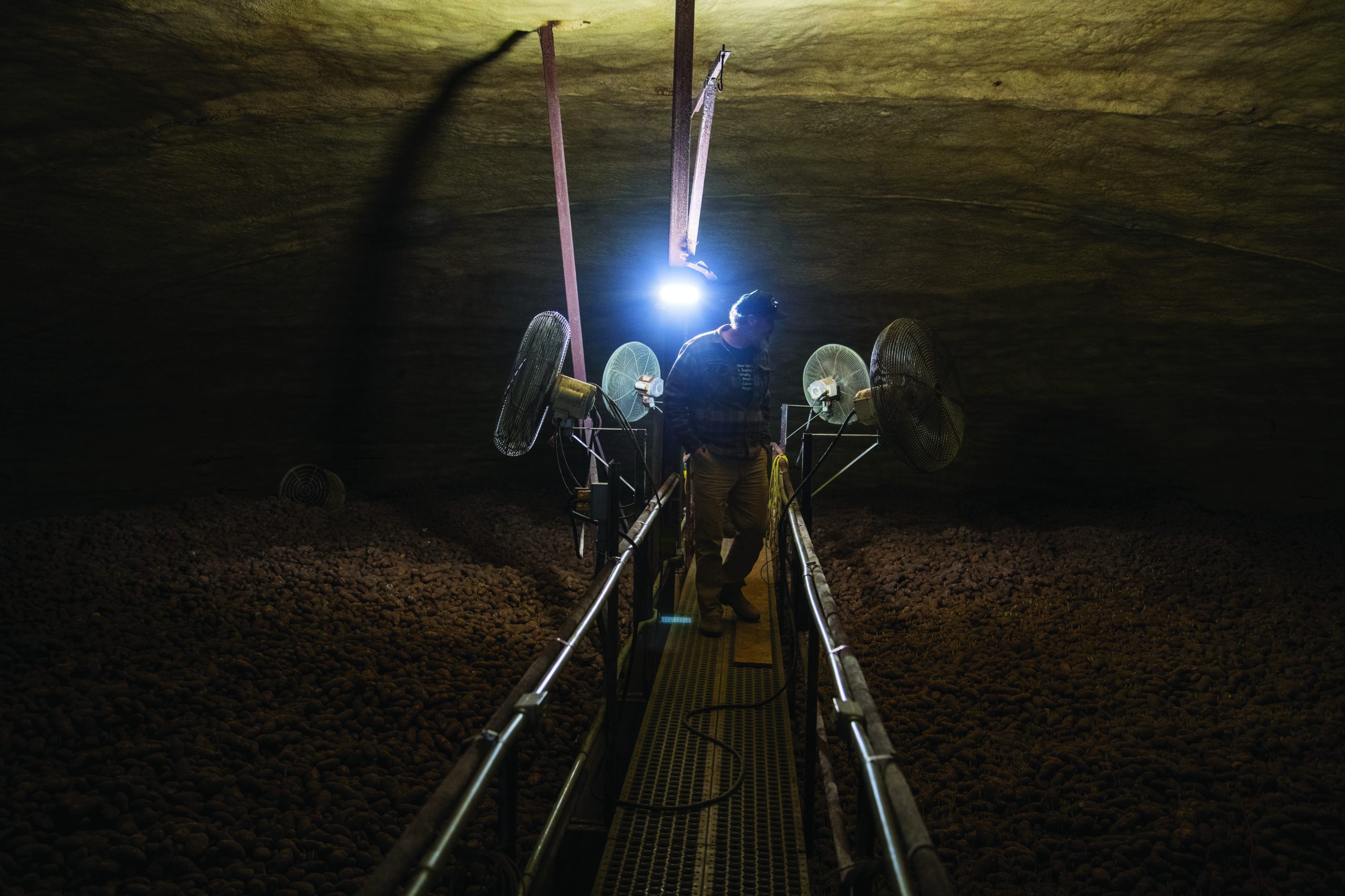

Regenerative agriculture intrinsically means taking a holistic approach to farming, and industry greenwashing can generally be identified by its reductivity – especially by equating the whole methodology with the single practice of tilling less, while continuing to pour agrochemicals onto the soil.
A new report published in April by Sarah Starman, senior food and agriculture campaigner, and Kendra Klein, deputy director of science, at Friends of the Earth, found that “the vast majority (93%) of U.S. corn and soy acreage grown in no-till and minimum-till management systems relies on toxic pesticides that harm soil health and threaten human health.”
Asked about McCain’s regenerative framework, the authors wrote in an email to Corporate Knights that the company had made a great start by explicitly lifting up agrochemical reduction as a pillar of its program and by using an accepted benchmarking system to effectively measure its progress. But key aspects of their approach could be improved: “McCain doesn’t share a specific timeline for moving growers in their supply chain beyond the first level, ‘Engaged.’ Given the devastating impacts of agrochemicals on biodiversity, climate, soil, and human health, it is essential that companies set up frameworks that lead to steep reductions in agrochemical use in their supply chain at an urgent pace, not leave the door open for a continuation of the status quo.”
Despite its commitment to regenerative farming, McCain is not otherwise a leader on environmental, social and governance metrics. Sustainalytics gives McCain an “average” rating for its management of ESG material risk. McCain does not disclose enough information to be a contender for Corporate Knights’ Best 50 list of Canada’s most sustainable companies.

Making the case
As auspicious as the overall trend looks, conventional agriculture remains extremely entrenched, and most people don’t know or care about regenerative practices. “According to our most recent research, most people aren’t sure what regenerative agriculture is, or its potential in mitigating climate change,” Angelakos says. Fewer than one in 10 Canadians understand the concept of regenerative agriculture practices; 26% of Canadians had never heard about it.
Still, the market indifference to regenerative agriculture could be taken as an indicator that McCain is being honest about its motives and serious about its transition. But they aren’t leaving consumers to find their own way. The company is working hard to promote the idea of regenerative agriculture, through ad campaigns, partnerships with influencers and a demonstration project with the Sustainable Markets Initiative in the United Kingdom to show the strong business case for regenerative farming. It even made an augmented-reality game, whereby a cartoon farm is projected onto a surface using your phone’s camera. Users gain points by growing potatoes and then investing in pollinators, crop cover, livestock and technology.
But change happens on the ground, not on our phones. Our food system needs more biodiversity, not more industrial inputs. Fortunately, farms really do work best – and farmers do better – when nature takes the lead.
*Correction: An earlier version of this article misstated the number of countries in which McCain is active.
Cover image: Harold Perry inspects fresh piles of compost and digestate at CKP farms near Coaldale, Alberta on May 23, 2025.
Mark Mann is a journalist in Montreal and the associate editor at Corporate Knights.
Photography by Guillaume Nolet.
